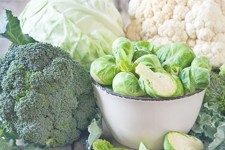
A dish of flowers: spring arrives also on the table
As spring arrives, flowers draw attention to themselves in the most elegant restaurants: an unexpected colour in a mixed salad, a daring presence on a velouté.
These are the edible flowers, which can be eaten and surprise us with a taste we would never expect to find in a meal.
Eating flowers: this sounds strange, innovative, and wild.
But we do it all the time, even if we do not pay any attention to it. Here are three names for you: artichoke, cauliflower and broccoli. They are flowers. We know them as vegetables, but they are actually flowers (Surprised? Well, peppers and tomatoes are fruit, not vegetables either!).
But, if we move on to those ones we are used to recognizing as flowers like, for example, roses or violets, then history will surprise us.
The practice to eat edible flowers isn’t new at all: ancient Romans, for example, used to flavour omelettes or purée with different kinds of roses.
In the medieval France, the calendula was used to enrich salads while the elderflower was used in Central Europe.
Nowadays, all over the world, we eat a good 180 kinds of edible flowers: among the most used ones we have hibiscus, peony, rose, chrysanthemum, camomile, magnolia and jasmine.
From a nutritional point of view, several studies have underlined a high antioxidant and, in some cases, vitamin content in many kinds of edible flowers.
Given the small amount we eat during a meal, it would be rather misleading to consider these food as main sources of such nutrients. Even if they certainly represent a very interesting source to alternate with those that are more known and common, their strength is the sensory gratification because eating and healthy eating involves the pleasure of colours, the astonishment of an unexpected taste, the enjoyment of something unusual.
But what do these edible flowers taste of? Let’s see some of them:
– Begonia: the stem has an aromatic and bitter taste that could remind rhubarb. More delicate is the taste of its petals, suitable to garnish a salad.
– Chrysanthemum: its pungent note makes it suitable to aromatise vinegar. To use it directly, it’s better to scald it in boiling water first.
– Dandelion: sweet when in the bud, it turns bitter as it ripens. It could be directly served or steamed first.
– Nasturtium: sweet and spicy at the same time, it well combines with watercress.
– Sunflower: if eaten when still in the bud, it has a taste similar to artichoke.


